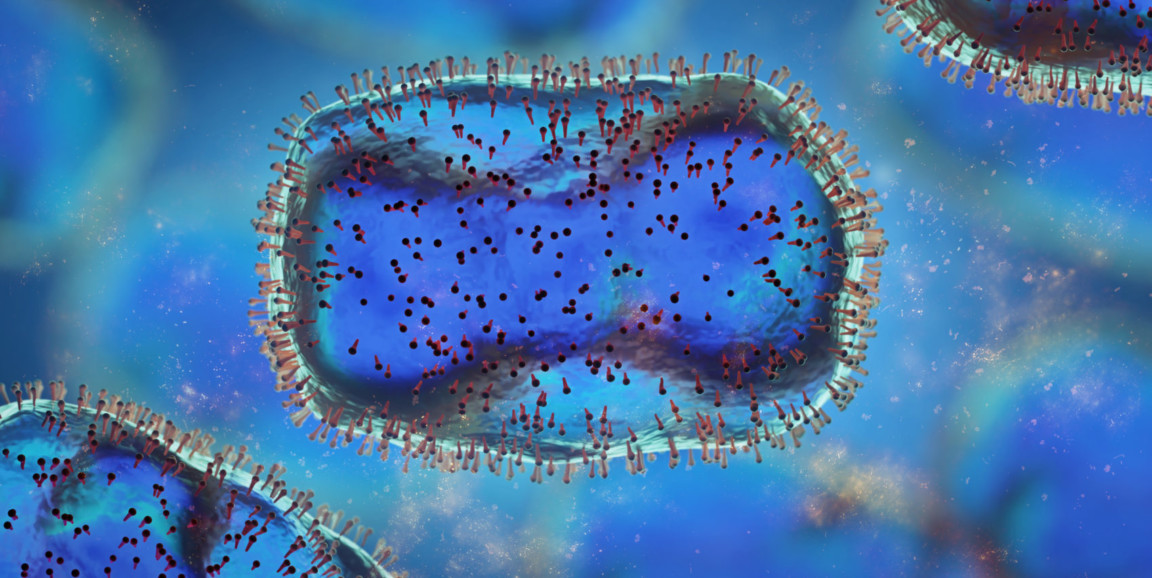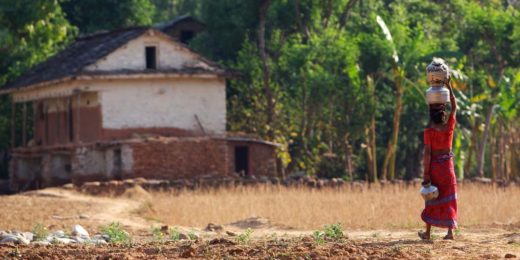The 2022 outbreak of monkeypox has been detected in 95 countries, and the virus has infected more than 15,000 Americans. Although the vast majority of cases have been reported in men who have sex with men, the monkeypox virus can be transmitted through close contact that does not involve sex.
Recently, Stanford Medicine researchers published a case report in Emerging Infectious Diseases of a man who contracted monkeypox at an outdoor festival where he hadn't engaged in sexual activities.
According to the report, the man had recently attended several crowded outdoor events where he had close, skin-to-skin contact, such as dancing, with multiple people over the course of four days. He didn't notice any skin lesions or anyone sick among those with whom in came into contact. Two weeks later, he began to develop skin lesions on his hands, lip, torso and back. He reported no sexual contact in the three months prior to symptoms.
What does this case tell us about monkeypox transmission? Is it cause for alarm? (No.)
We talked with Jorge Luis Salinas, MD, assistant professor of infectious diseases and co-author of the report, to understand the significance of the case, what we know and don't know about monkeypox transmission, and how we should think about our individual risks.
What was unusual about this particular case of monkeypox?
The patient, unlike a majority of reported cases in the current outbreak, had not had recent sexual contact with anybody.
This stands out in the current outbreak, but not in our overall understanding of monkeypox transmission. In fact, in previous outbreaks, monkeypox was known to be transmitted through skin-to-skin contact usually without sex. That was the norm.
This 2022 outbreak has been unique in that, for 95% or more of cases, acquisition has been suspected to be through sex. Sex has been such an omnipresent factor in this outbreak that it's been difficult to discern which aspect of sex leads to transmission. Maybe it doesn't necessarily have to do with exchange of body fluids per se, but more with just being very physically close with somebody else.
What should people take away from this case report?
This case shows that monkeypox transmission does not require sex, but it does likely require intense, prolonged skin-to-skin contact. You are not doing that when you go to school, go to work, go grocery shopping or pass others in a hallway. At the moment, the risk is exceedingly low in most daily life activities. For the general population, therefore, this case doesn't mean that they are at greater risk of acquiring monkeypox.
The virus doesn't care about your gender or your identity. Any human can get monkeypox. However, devoting our public health efforts to the predominant population where the virus is being transmitted is the best way to control this epidemic.
The highest incidence of recent infections is in men who have sex with men. For people in this group, it's important to be vaccinated and to reduce the number of sexual partners during the monkeypox outbreak. If they are going to have sex with somebody, they should ask if the other person is feeling well and if they have any skin lesions. If someone has had monkeypox, condoms are recommended for several weeks after recovery.
What kind of close contact is required for transmission?
Skin-to-skin transmission is most likely to happen if an infected person's lesion contacts another person's skin, especially broken skin. The longer and more intense the contact, the more exposure there is to the virus, and the greater the risk of infection -- a concept we're familiar with from the coronavirus pandemic.
Skin lesions may not be obvious and it's possible for the virus to be found on areas of skin without lesions. The patient in the case report, for example, had not noticed lesions on anyone he was with.
Transmission through respiratory droplets may be possible, but I think it's less likely in this case because he was outdoors. If this virus was readily and easily transmissible through respiratory routes, we would have seen more transmission in other social networks outside of men who have sex with men. In general, including all the cases we've known about in the world, respiratory transmission appears to be inefficient.
Did this patient have symptoms that were different from those of someone who acquired the infection through sexual contact?
There appears to be an association between sexual acquisition and having genital or anal lesions. This person did not have lesions in that area, perhaps corroborating that sex was not part of this person's acquisition.
But one case is not definitive evidence. Large-scale studies would be needed to show that symptoms differ by mode of transmission, and those have been difficult because the majority of patients in the outbreak have been men who have had multiple recent partners.
The monkeypox virus appears able to travel to many sites in the body and has been detected not only in skin lesions but also in saliva, semen, the nose, throat, eyes and rectum.
However, just because the virus is detectable does not mean it's transmissible. Generally, the greater the viral load, the greater the risk of transmission. In this report, we were able to quantify the amount of virus present, and the viral load was much higher in the skin lesion than in other sites, supporting the idea that skin contact is the main route of transmission.
Why haven't there been more cases of transmission between men and women?
That is an interesting question and among many that are still unanswered. I think it may happen eventually. It's possible that, similar to HIV transmission, anal sex increases the risk of monkeypox transmission more than other types of sex. The rectal mucosa has blood vessels, lymphocytes and other immune cells that make it more predisposed to infection; there is also the risk of more abrasions.
We're looking into that and many other questions. For example, how long are people infectious? Can people be infectious before they have symptoms? If so, how is the virus transmitted? We don't know any of that for sure. The current knowledge is that transmission before symptoms is unlikely, but we don't have definitive evidence.
We also need to better understand how well the current vaccines and medications work, and whether they can prevent disease transmission. We need to accumulate more data on several fronts to fully understand monkeypox.
Photo dottedyeti






